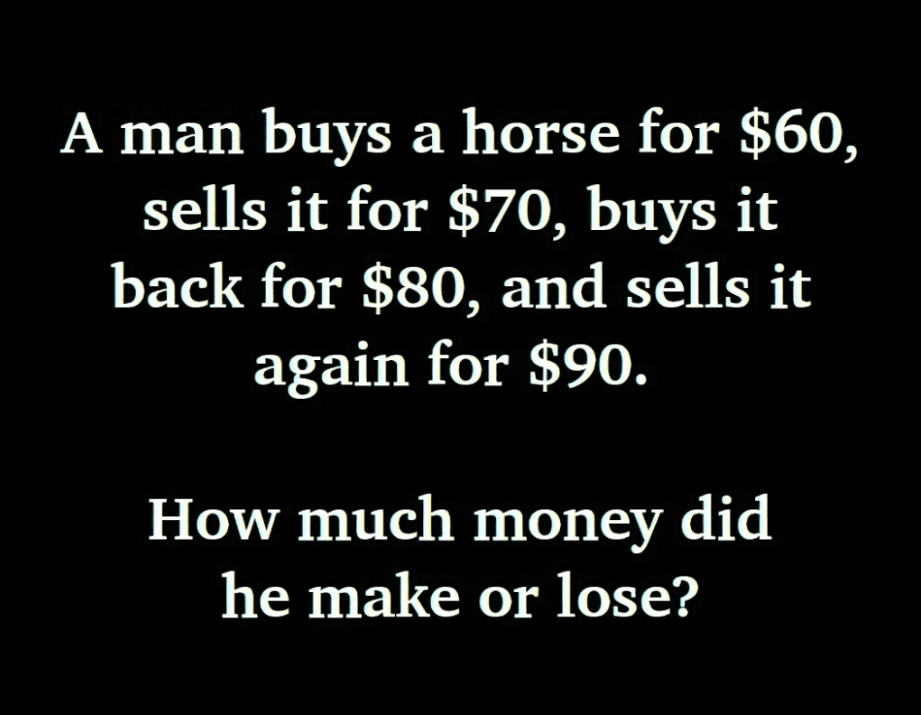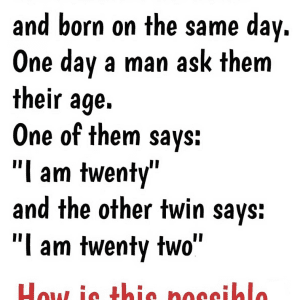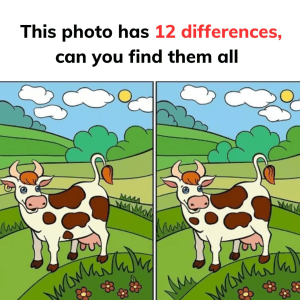Riddles are always fun to solve, and they often test our ability to think outside the box. One such riddle asks us to figure out how much a man made or lost after buying and selling the same horse twice. The scenario goes like this: A man buys a horse for $60, sells it for $70, buys it back for $80, and sells it again for $90. Let’s break this down step by step to figure out his profit.

To understand how much the man made or lost, we need to look at each transaction carefully.
The First Transaction
- Buys the horse for $60.
- Sells the horse for $70.
In this first transaction, the man purchases the horse for $60 and then sells it for $70. To calculate his profit from this transaction:
- Profit = Selling Price – Purchase Price
- Profit = $70 – $60 = $10
So, after the first transaction, the man makes a profit of $10.
The Second Transaction
- Buys the horse back for $80.
- Sells the horse again for $90.
In the second round, the man buys the same horse back for $80 and sells it for $90. Let’s calculate his profit from this second transaction:
- Profit = Selling Price – Purchase Price
- Profit = $90 – $80 = $10
Thus, in the second transaction, the man makes another profit of $10.
Now that we’ve calculated the profit from each transaction, we can add them together to find the total profit.
- First Transaction Profit = $10
- Second Transaction Profit = $10
Total Profit = $10 + $10 = $20
So, after completing both transactions, the man made a total profit of $20.
At first glance, this riddle might seem confusing. You might wonder whether the man lost money by buying the horse back for a higher price or question whether something is missing from the equation. However, it’s important to remember that profit is simply the difference between what the man bought the horse for and what he sold it for in each individual transaction.
In conclusion, the man in the riddle made a total profit of $20 by buying and selling the same horse twice. While the scenario might seem confusing at first glance, it becomes clear once you break down each transaction. Both sales resulted in a $10 profit, adding up to a total gain of $20. The riddle serves as a reminder to approach financial problems with clarity and not to overthink seemingly complex situations.


